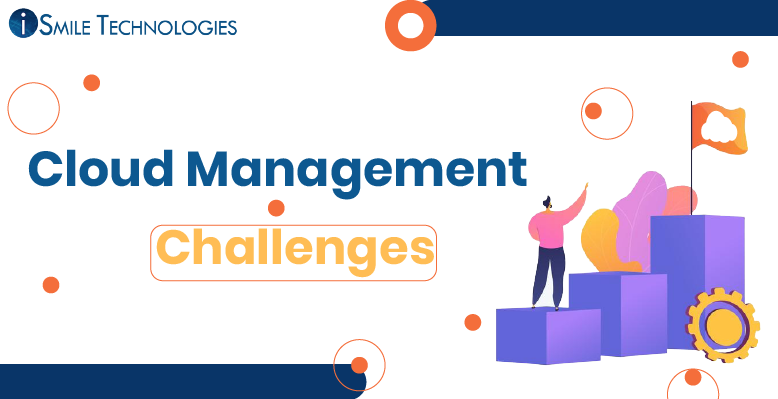While the usage of cloud technology is increasing as a result of digital transformation, businesses must be mindful of the problems associated with cloud management, such as performance, expertise, security, portability, and cost. We’ll look at these five management issues and how to solve them in this article.
Obstacles you may come across:
1. Execution
Any applications moved to the cloud should deliver optimal performance, which depends on the public cloud provider’s capabilities. To avoid problems caused by inconsistent performance, find a provider that can ensure high availability and has performance monitoring tools in place. A Service Level Agreement (SLA) should be included in each contract that a firm signs, as it guarantees the resources and services, it will get. Enterprises should have their management tools to track performance to ensure this. They will be able to guarantee that the vendor fulfils its responsibilities in this manner.
2. Expertise
Because cloud environments differ from self-hosted data centers, businesses may find themselves with IT skills gaps when administering cloud-based services. This is becoming increasingly obvious as the quick speed of digital transformation forces businesses to migrate more workloads to the cloud, which is constantly changing technologically. Managing this involves training to provide existing IT workers with the necessary capabilities; nevertheless, to cover critical gaps, businesses might consider hiring new cloud-experienced employees or hiring third-party specialists. Alternatively, customized IT solutions from a cloud provider that knows the environment better than anybody else can be arranged.
3. Safety and security
Organizations who wish to build on-site private cloud environments but lack the experience and resources public cloud suppliers have at their disposal confront the most significant cloud security problem. By establishing an on-site private cloud, the company assumes full responsibility for data security and regulatory compliance. It will have to choose which tools to utilize and learn how to use, manage, and maintain them properly. Private cloud security is an issue for many businesses due to a lack of funding, training, and personnel and the difficulties of maintaining the security of numerous cloud services.
4. Convenience
Because companies may wish to migrate workloads rapidly from one vendor to another, it’s critical to avoid vendor lock-in, which occurs when an organization’s architecture and tools become so dependent on one vendor that it’s impossible to switch.
The new cloud provider must reproduce the environment where the application was previously hosted to transfer between cloud environments. Today, standards bodies, industry consortiums, and vendor alliances build technologies that enable app interoperability, making this a lot easier. Container technologies, for example, allow apps and their operating environments to be relocated fast, while compatibility difficulties may still exist.
5. Cost management
Cloud migration provides businesses with tremendous cost savings and efficiency. There are no upfront fees for hardware, nor are there any related operating costs. The savings here can be enormous, given the number of IT resources businesses may demand.
Furthermore, cost-effectiveness is accomplished by using the cloud’s pay-as-you-go payment mechanism. Organizations will only ever pay for what they use, thanks to the ability to indefinitely scale resources up or down on demand. However, as businesses shift workloads to the cloud and collect more significant amounts of data, prices and vendor fees may climb over time. Many firms are now deploying a cloud use analytics tool to control the cloud’s expense. This can assist them in identifying where resources are being wasted and finding more efficient methods to manage their tasks.
Ready to experience the full power of cloud technology?
Our cloud experts will speed up cloud deployment, and make your business more efficient.
Conclusion
Enterprises may profit from cloud migration in several ways, including lower capital investment, cost-effective scalability, high availability, and access to sophisticated technologies such as AI, machine learning, IoT, and data analytics. The obstacles listed below must be considered part of any migration plan to avoid problems during and after migration
If you need further guidance regarding cloud management, Get Your Free Consultation.








